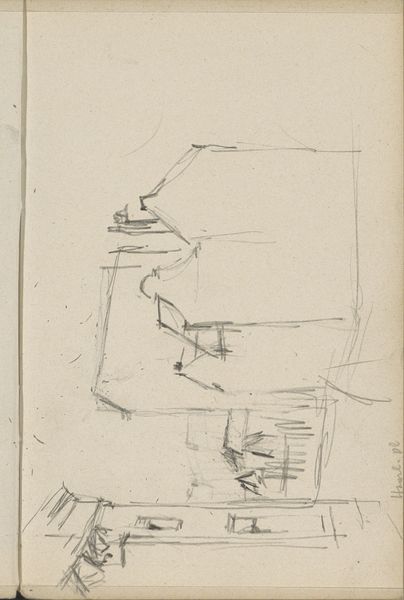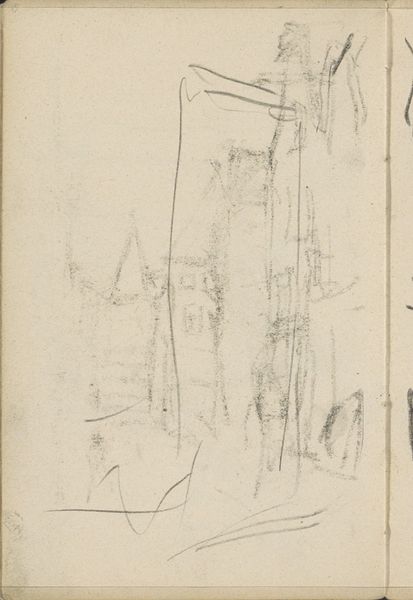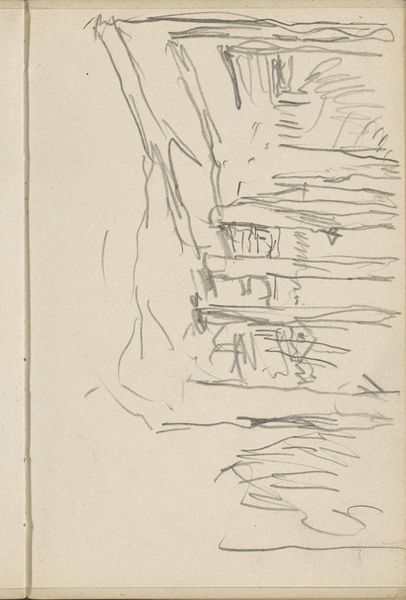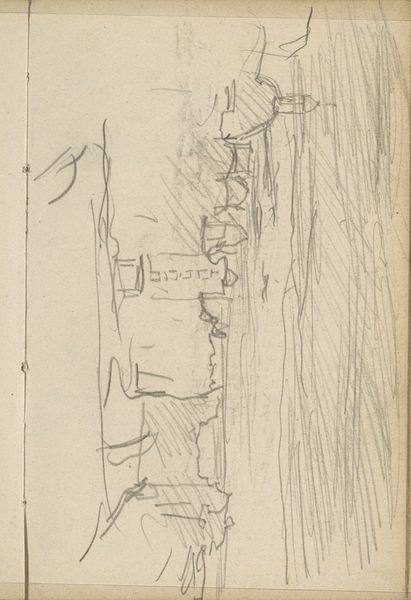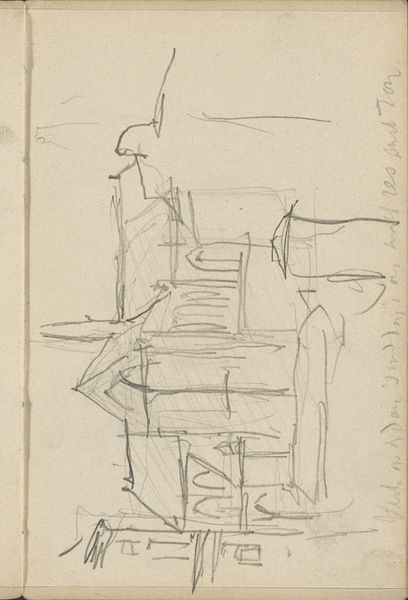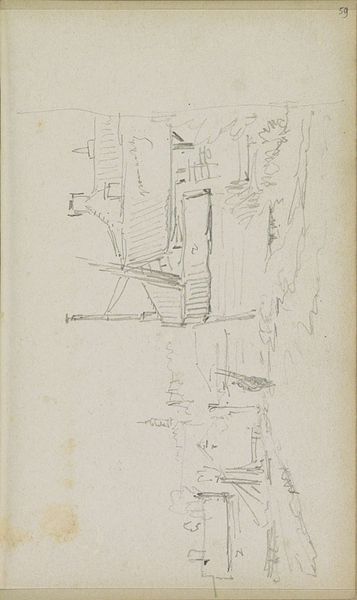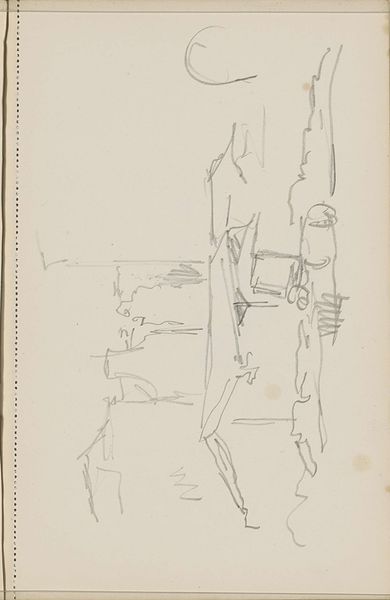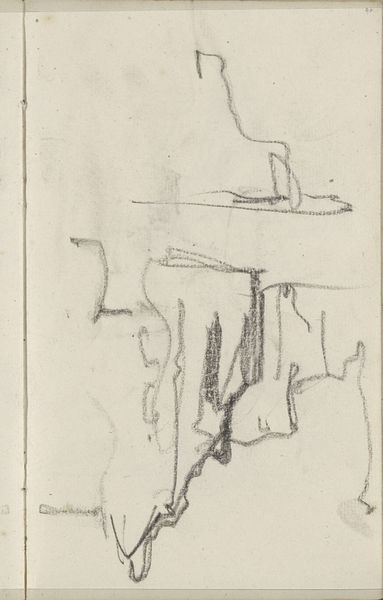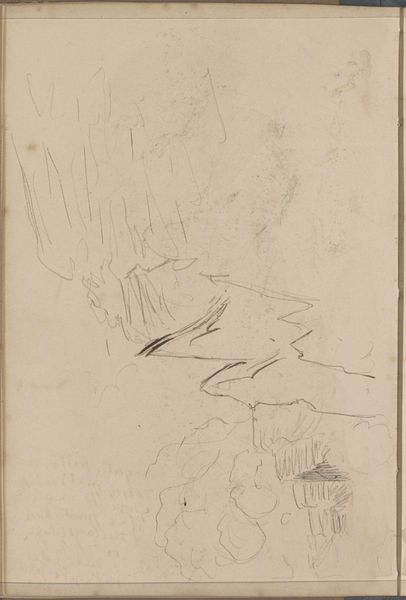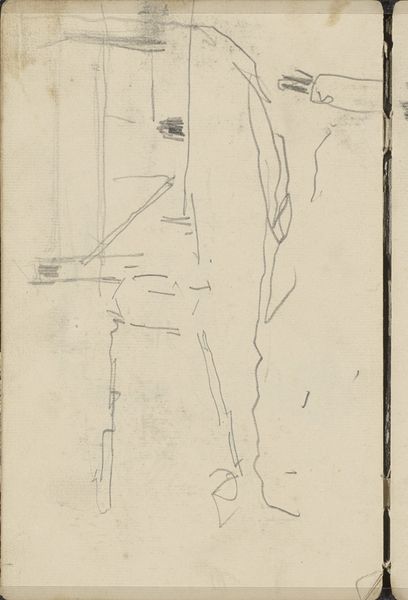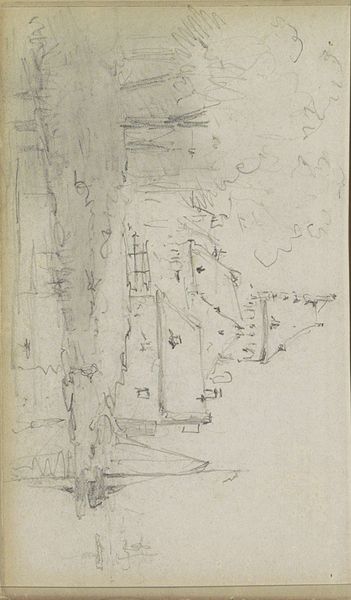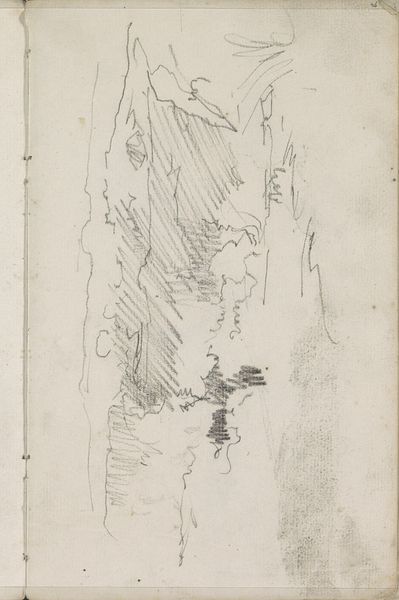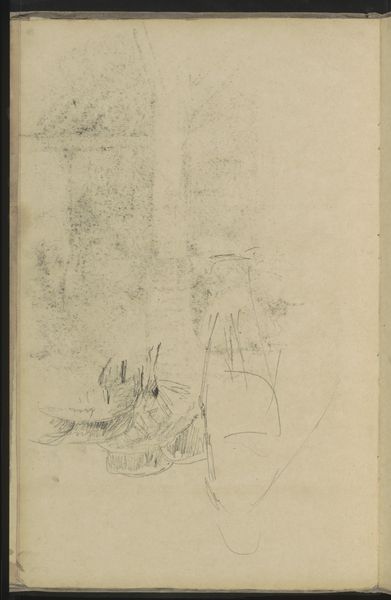
Gezicht op een brug, mogelijk de Langebrug over het Rokin te Amsterdam c. 1886 - 1903
0:00
0:00
georgehendrikbreitner
Rijksmuseum
Copyright: Rijks Museum: Open Domain
Curator: Before us, we have "View of a Bridge, Possibly the Langebrug over the Rokin in Amsterdam," a drawing by George Hendrik Breitner, likely created between 1886 and 1903. What’s your first impression? Editor: I see a world caught in swift notation. It's a whisper of a cityscape, rendered in the most economical of lines, the bridge and buildings dissolving into pure essence. Curator: Breitner, known for his unflinching depictions of Amsterdam street life, often used such drawings as studies for larger paintings. This allows us insight into his process. We can analyze the cultural milieu, his lens capturing a transforming urban space, reflective of rapid industrialization and its effect on labor. How does the starkness echo the socio-political realities of the period? Editor: Absolutely, it’s a visual shorthand. And yet, those quick strokes capture something of the enduring character of Amsterdam. The bridge, repeated motifs of archways, reflections—these are archetypes of connection and transition. Breitner returns repeatedly to these familiar sights which embody a deep, cultural resonance. Curator: And considering Breitner's positioning within the Amsterdam Impressionism movement, we can see his engagement with contemporary theories of perception. His images aimed to replicate fleeting moments. How are social constructs mirrored, for example, in who crosses a bridge or lives on the canals depicted here? Editor: These structures, like bridges, also serve as symbolic crossing points. Consider too how a rapid pencil sketch, this very act of visual note-taking, served as an emotional act that then and now carries particular meaning, both public and private. Curator: Indeed, seeing how these lines begin to solidify into a larger project invites viewers to question which stories become immortalized in “finished” art, versus quick impressions such as these. It encourages critical thinking. Editor: It invites meditation upon layers of time—the era in which it was created, plus our current relationship to the image, and those timeless symbols contained within. Thank you. Curator: And thank you, this has helped illuminate this work through intersecting narratives and deeper historical analysis.
Comments
No comments
Be the first to comment and join the conversation on the ultimate creative platform.
